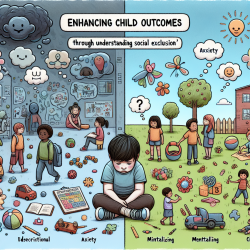Introduction
In the realm of speech language pathology and child development, the intersection of nutrition, physical activity, and cultural practices plays a pivotal role. A recent study titled Strategies for Promoting Healthy Nutrition and Physical Activity Among Young Children: Priorities of Two Indigenous Communities in Canada sheds light on how traditional Indigenous practices can be leveraged to promote health and well-being among young children. This blog explores how practitioners can implement these findings to enhance their practice and create better outcomes for children.
Understanding the Research
The study conducted by Wahi et al. (2019) involved two Indigenous communities in Canada, focusing on identifying priorities and strategies for promoting healthy nutrition and physical activity among young children. Through community engagement workshops and qualitative interviews, the research highlighted the importance of integrating Indigenous ways of life, including traditional foods and physical activities, into health promotion strategies.
Key Findings
- Traditional Knowledge as a Pathway: The study emphasized that traditional Indigenous ways of life are crucial for promoting health and well-being. This includes passing down traditional knowledge and practices through family teachings, community programs, and school curricula.
- Healthy Food Choices: Participants identified traditional foods such as wild meats, berries, and homemade soups as healthy options for children, contrasting with processed and sugary foods.
- Physical Activities: Traditional activities like hunting, dancing, and gardening were highlighted as important for children's physical development.
- Community and Contextual Factors: Economic, geographic, and cultural factors significantly influence dietary and physical activity patterns, necessitating community-led solutions.
Implications for Practitioners
For practitioners in speech language pathology and related fields, these findings offer valuable insights into culturally responsive practice. Here are some strategies to consider:
- Incorporate Cultural Context: Recognize and integrate the cultural context of Indigenous communities into therapy and intervention plans. This can enhance engagement and effectiveness.
- Promote Traditional Practices: Encourage families to engage in traditional activities and consume traditional foods as part of a holistic approach to health.
- Collaborate with Communities: Work with community leaders and members to develop culturally tailored programs that address specific needs and barriers.
- Advocate for Resources: Advocate for resources and support systems that address economic and geographic barriers to healthy living.
Encouraging Further Research
While this study provides a foundational understanding, further research is needed to explore the long-term impact of culturally integrated health promotion strategies. Practitioners are encouraged to engage in research initiatives that expand on these findings and contribute to the evidence base for culturally responsive practices.
To read the original research paper, please follow this link: Strategies for Promoting Healthy Nutrition and Physical Activity Among Young Children: Priorities of Two Indigenous Communities in Canada.










